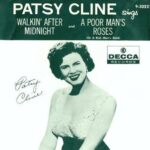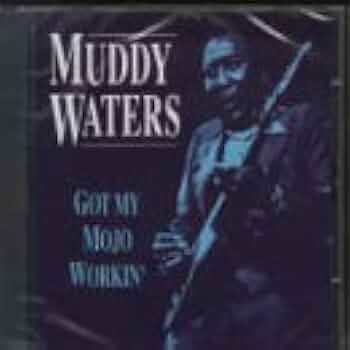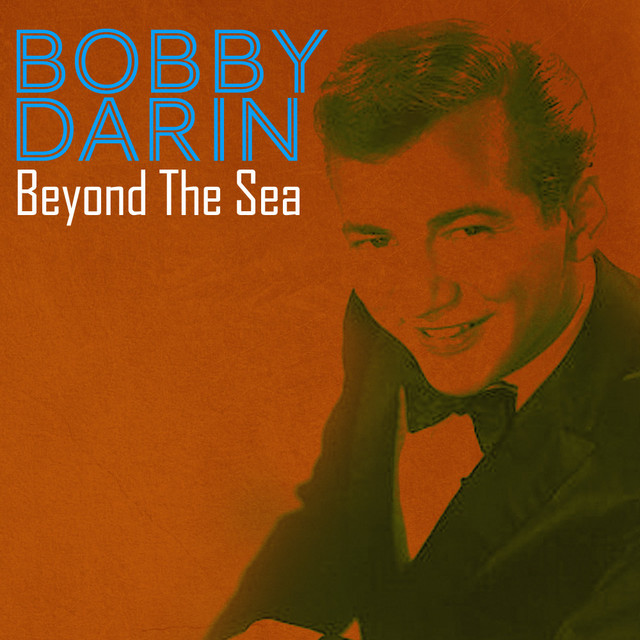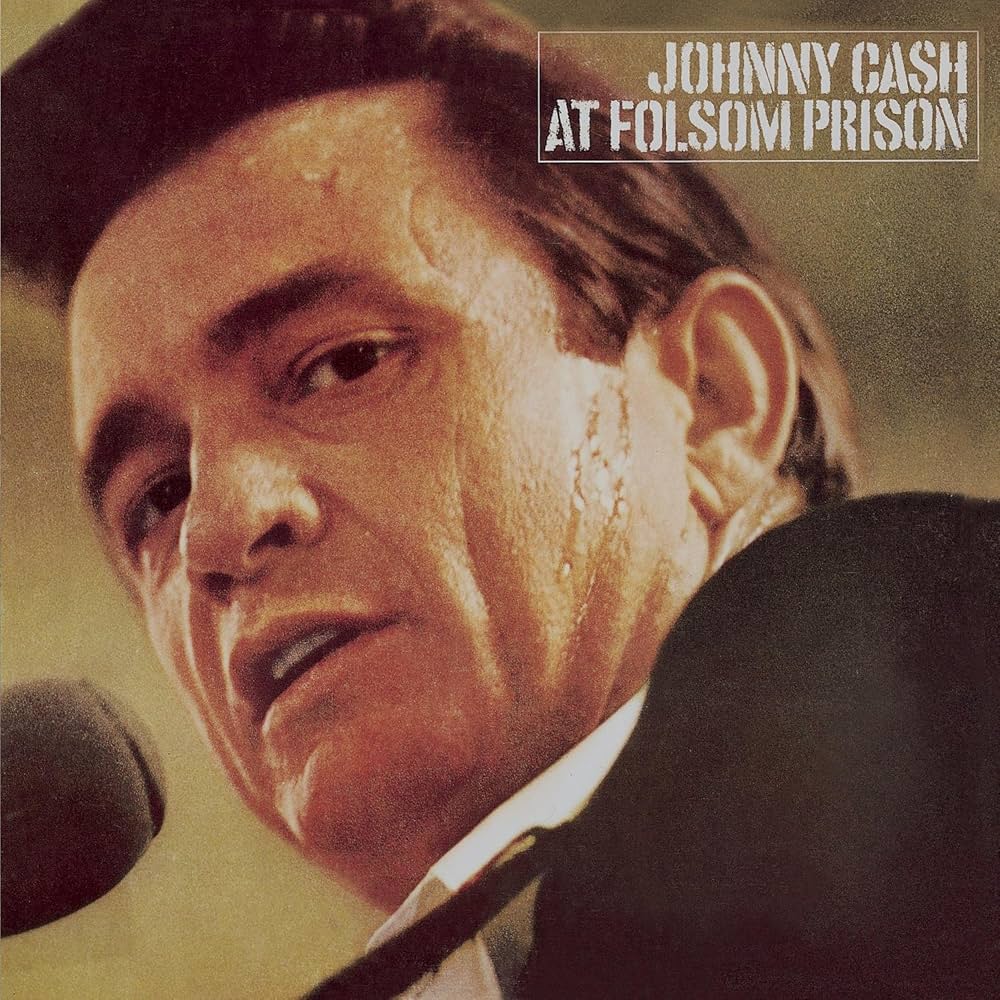 “Walkin’ After Midnight” by Patsy Cline is one of those rare recordings that encapsulates the timeless appeal of country music while transcending its genre to become an enduring classic of American popular music. Released in 1957 as Cline’s debut single, the song marked the emergence of a voice that would become legendary, a singer whose phrasing, tone, and emotional resonance would influence generations of performers across genres. From the first plaintive notes, “Walkin’ After Midnight” conveys a sense of longing, loneliness, and quiet determination, a combination that transformed a simple country ballad into a song that still resonates nearly seven decades later.
“Walkin’ After Midnight” by Patsy Cline is one of those rare recordings that encapsulates the timeless appeal of country music while transcending its genre to become an enduring classic of American popular music. Released in 1957 as Cline’s debut single, the song marked the emergence of a voice that would become legendary, a singer whose phrasing, tone, and emotional resonance would influence generations of performers across genres. From the first plaintive notes, “Walkin’ After Midnight” conveys a sense of longing, loneliness, and quiet determination, a combination that transformed a simple country ballad into a song that still resonates nearly seven decades later.
The creation of “Walkin’ After Midnight” represents a pivotal moment in Patsy Cline’s career. At the time, she was a young singer from Winchester, Virginia, navigating the challenges of a male-dominated country music industry. The song was written by Alan Block and Donn Hecht, and its lyrical simplicity belied the emotional depth it carried. The narrative follows a woman walking alone late at night, searching for a lost love or perhaps comfort, embodying the universal experience of heartbreak and yearning. Yet what makes the song extraordinary is not the storyline itself, but the way Cline delivers it. Her voice possesses a unique blend of vulnerability and strength, capable of conveying sorrow without surrendering to it, longing without melodrama. This balance became her signature and a hallmark of her lasting influence.
Musically, “Walkin’ After Midnight” is deceptively straightforward, yet its arrangement perfectly complements Cline’s vocal performance. The song is built around a gentle, rolling rhythm that mirrors the sense of wandering and searching evoked in the lyrics. The backing instruments—sparse guitar, subtle piano, and restrained percussion—create a sonic landscape that allows Cline’s voice to take center stage. There is a tenderness in the arrangement that mirrors the emotional content of the song, supporting rather than overshadowing the vocal narrative. This careful balance between instrumentation and vocal delivery is one of the reasons the song has endured as a classic.
Cline’s phrasing in “Walkin’ After Midnight” is particularly noteworthy. She employs subtle shifts in timing, bending notes slightly to heighten emotional impact, creating a vocal line that feels both conversational and intimate. Each lyric feels carefully considered, yet effortless, giving the impression of spontaneous expression. Lines such as “I go out walkin’ after midnight, out in the moonlight, just hoping to see you” are delivered with a yearning that is palpable, yet never cloying. Her ability to inhabit the character of the song’s protagonist while maintaining her own vocal identity is part of what makes the performance so compelling.
The cultural impact of “Walkin’ After Midnight” cannot be overstated. Released during a period when country music was seeking to broaden its audience, the song became a crossover hit, reaching the pop charts and introducing Cline to a wider listening public. This success demonstrated that country music could appeal to mainstream audiences without losing its emotional authenticity. For Cline, it established her as a rising star and set the stage for a career that would include some of the most celebrated recordings in country music history, including “Crazy,” “I Fall to Pieces,” and “Sweet Dreams.”
Lyrically, the song captures a blend of melancholy and hope. The protagonist’s nocturnal wandering is not just a literal search for a lover but also a metaphor for the universal human quest for connection, understanding, and solace. The midnight setting amplifies the feelings of solitude and introspection, creating a mood that is both intimate and cinematic. The combination of Cline’s expressive delivery and the song’s lyrical imagery invites listeners to empathize with the narrator’s longing, making the experience both personal and universal.
“Walkin’ After Midnight” also reflects the broader trends in country music during the 1950s. The Nashville Sound, which would dominate country music in the subsequent decade, emphasized smooth production, pop-oriented arrangements, and crossover potential. While the song predates the full emergence of the Nashville Sound, it contains elements of what would become that style: a polished, professional recording that maintains the emotional core of traditional country. Cline’s performance bridges the gap between honky-tonk authenticity and pop accessibility, laying the groundwork for her future hits and influencing countless artists who followed.
The song’s reception upon release was immediate and enthusiastic. Fans responded to Cline’s emotive voice and the song’s relatable narrative, while critics recognized the sophistication of both her performance and the production. Its success on both country and pop charts signaled a significant moment in American music, demonstrating that a country ballad could transcend its genre and resonate with a wide audience. The song’s impact also helped solidify Patsy Cline’s reputation as one of the most important female voices in country music, capable of blending emotional depth with mainstream appeal.
One of the remarkable aspects of “Walkin’ After Midnight” is its enduring presence in popular culture. Over the decades, the song has been covered by numerous artists across genres, from traditional country singers to pop and jazz performers. Each interpretation brings a new perspective while honoring Cline’s original performance, demonstrating the song’s versatility and timeless appeal. Its lyrics and melody have also appeared in films, television shows, and commercials, ensuring that the song remains in the public consciousness.
Live performances of “Walkin’ After Midnight” further showcase Cline’s artistry. Her ability to convey intimacy in a large venue, connecting with audiences through subtle inflections, eye contact, and phrasing, set her apart from many contemporaries. While the studio recording captures the essence of the song, her live renditions added layers of immediacy and emotional resonance, allowing listeners to experience the narrative in a direct and compelling way. This skill in live performance contributed to her enduring reputation as a consummate entertainer and a master of vocal storytelling.
The song’s themes of longing, vulnerability, and quiet resilience resonate across generations. While it was written in the context of 1950s America, its emotional content is universal. The idea of walking alone at night, searching for something or someone meaningful, is a metaphor that transcends time and place. Listeners in different decades and cultures can identify with the protagonist’s desire for connection, the mix of hope and despair, and the courage to continue despite uncertainty. This universality contributes to the song’s lasting appeal.
“Walkin’ After Midnight” also highlights the importance of collaboration in music. While Cline’s voice is central, the song’s success depends on the synergy between her, the songwriters, and the production team. The careful arrangement, attention to pacing, and thoughtful instrumentation all serve to amplify the emotional impact of Cline’s performance. This collaborative approach is a hallmark of enduring musical works, demonstrating that while talent is essential, context, arrangement, and production play equally vital roles in creating a classic recording.
In addition to its musical and cultural significance, the song played a pivotal role in shaping Patsy Cline’s career trajectory. Following the success of “Walkin’ After Midnight,” Cline was able to secure more significant recording opportunities, increased visibility, and a platform from which to expand her artistic range. The song established her as a leading voice in country music and provided a foundation for subsequent hits that would further cement her legacy. Without this early success, it is possible that her career might have taken a different path, highlighting the song’s critical role in her artistic development.
Over time, the song has become emblematic of Cline’s style and influence. Her ability to combine technical precision, emotional authenticity, and interpretive nuance in “Walkin’ After Midnight” set a standard for female vocalists in country music and beyond. Artists ranging from Loretta Lynn to Norah Jones have cited Cline’s phrasing, tone, and emotional clarity as inspirational, demonstrating the song’s impact on successive generations of performers. Its influence extends beyond country music, shaping vocal approaches in pop, jazz, and folk, underscoring Cline’s role as a transformative figure in American music.
The song’s emotional resonance is enhanced by its melodic construction. The melody follows a gentle, descending pattern that mirrors the sense of wandering and searching inherent in the lyrics. This melodic choice reinforces the song’s narrative and emotional content, creating a cohesive listening experience in which every note and phrase contributes to the overall storytelling. Combined with Cline’s expressive delivery, the melody ensures that the song remains memorable and affecting decades after its initial release.
Another factor in the song’s enduring appeal is its ability to evoke imagery and atmosphere. The nocturnal setting, the sense of solitude, and the longing for connection all contribute to a vivid emotional landscape. Listeners can imagine the protagonist walking alone under the moonlight, experiencing the quiet tension between hope and disappointment. This evocative quality makes the song immersive and relatable, allowing it to resonate on both an intellectual and emotional level.
Cline’s interpretation of the song also reflects her deep understanding of emotional nuance. She balances the melancholy of the lyrics with a subtle sense of determination, ensuring that the protagonist feels active rather than passive. This interpretive skill allows listeners to engage with the character’s emotional journey and fosters a connection that transcends time, place, and cultural context. Her performance demonstrates that the power of a song often lies not just in its composition but in the choices made by the performer.
“Walkin’ After Midnight” continues to inspire contemporary artists and audiences. Its themes, melody, and emotional clarity make it a frequent choice for reinterpretation, tribute performances, and inclusion in media. The song’s continued relevance underscores its status as a classic and reflects Patsy Cline’s enduring influence on the broader musical landscape. Its ability to resonate with listeners across generations is a testament to the universality of its emotional content and the mastery of its performance.
Ultimately, “Walkin’ After Midnight” by Patsy Cline stands as a landmark recording in the history of American music. Its blend of emotional depth, melodic sophistication, and interpretive nuance makes it a song that continues to captivate listeners nearly seventy years after its release. It represents the emergence of Patsy Cline as a transformative artist, a vocalist capable of conveying the full spectrum of human emotion with subtlety and power. Its influence extends across genres, generations, and cultural contexts, ensuring that the song remains an enduring classic.
The legacy of “Walkin’ After Midnight” lies in its ability to capture the universal experience of longing and the human desire for connection while showcasing the artistry of one of America’s greatest voices. Patsy Cline’s performance transforms a simple country ballad into a timeless work of art, demonstrating the power of interpretation, phrasing, and emotional resonance. As listeners continue to discover and rediscover the song, its status as a cornerstone of American music remains secure, a testament to the enduring magic of Patsy Cline and her unforgettable voice.


